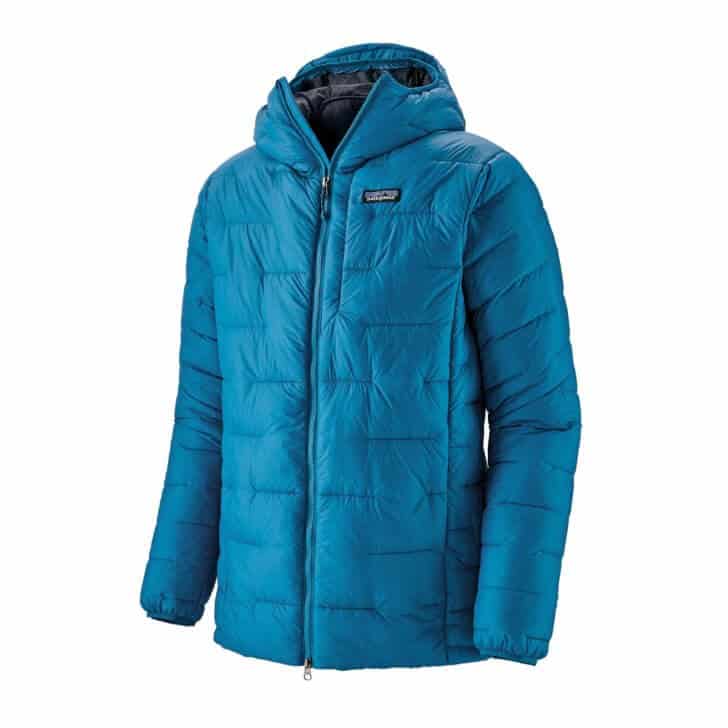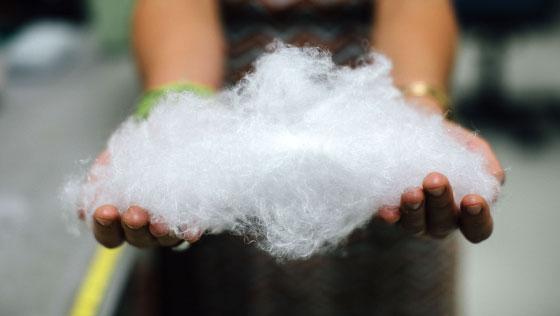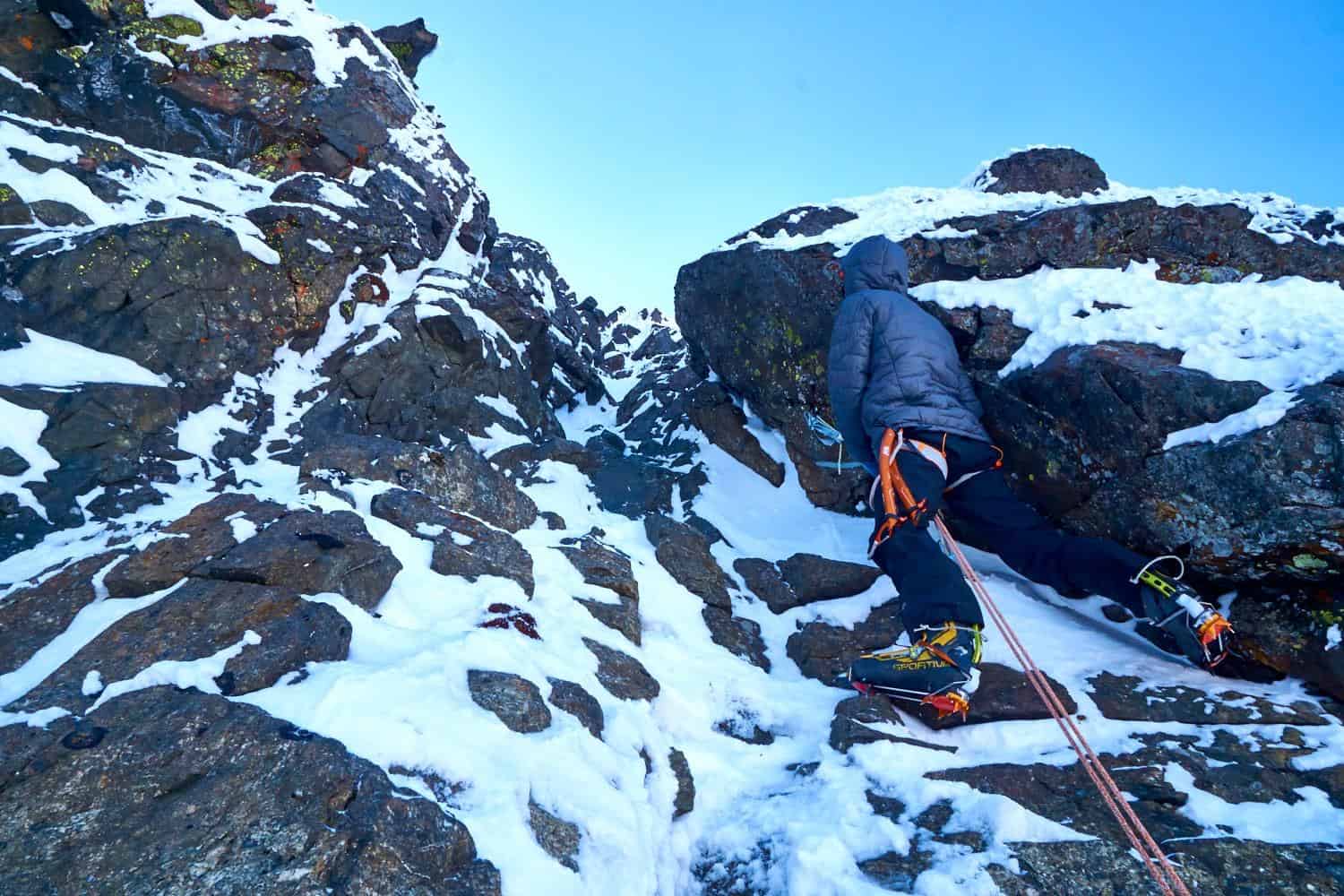Introduction
The Patagonia Macro Puff Hoody is the first lightweight four-season synthetic insulated jacket that I believe is worth buying. All previous models that I’ve used have been too warm, too heavy, or utilize highly water-resistant fabrics that reduce the dry time. The Macro Puff offers a practical combination of warmth, comfort, low weight, and efficacy in cold, wet conditions. Shortly after I started using the Macro Puff, I sold my only down jacket. The Macro Puff was more comfortable, warmer, and more functional for the activities I pursue in my cold, wet climate.
What separates the Macro Puff from competing synthetic insulated jackets is the extra-long cut, high warmth to weight ratio, outstanding compressibility, and complete belay parka feature set. Additionally, the soft and supple insulation helps to make the Macro Puff the most comfortable windproof synthetic insulated jacket I have ever used. I recommend it for backpacking and all types of lightweight human-powered travel in cold, wet, and humid environments – especially in shoulder seasons.

Features and Specifications
Specifications
- 15.2 ounces (431g) measured weight in men’s medium
- 135 g PlumaFill insulation in the torso
- 90 g PlumaFill insulation in the sides and sleeves
- Extra long cut is 30” from the neck to the bottom, and covers the butt
- 10-denier recycled ripstop nylon fabric throughout
Features
- Large, helmet-compatible hood
- DWR finish on the shell
- Two hand warmer pockets
- Two 10” x 6” interior drop-in pockets
- 10” x 6” exterior chest pocket
- Two-way #5 YKK Vislon zipper
- Elasticized cuff closures
- Duel-adjust cord-lock system at hem
- Jacket can stuff inside the left-hand pocket
Review Context
This review builds upon the Spring 2018 Synthetic Insulated Jacket State of the Market Report, which researched over 100 jackets and field-tested 15 of the best models on the market. Please refer to that article for an analysis of what type of synthetic insulated jacket(s) could be best for your needs.
I was interested in testing the Macro Puff because I was disappointed by the fit and low level of warmth of Patagonia’s Micro Puff. That jacket was not warm enough for me for nine months of the year. Also, none of the five 16 – 18 oz (454 g – 510 g) windproof synthetic insulated jackets I’ve used have performed well enough for me to justify keeping them. Buzz around the Macro Puff indicated that it could be the best all-purpose windproof synthetic insulated jacket on the market for cool to cold (10 F to 50 F or -12 to 10 C) and wet conditions. I wanted my review to put this notion to the test.
Description of Field Testing
I used the Macro Puff for more than 30 days of backpacking, mountaineering, ski touring, and ski alpinism, between early February 2019 and late June 2019. The photos below share more information about the specific testing conditions.


Performance Assessment
Warmth
The Macro Puff is significantly warmer than other 10 -12 oz (283g – 340g) synthetic insulated jackets with the highest warmth to weight ratios (e.g. Nunatak PCT and Patagonia Micro Puff). The additional 3 – 5 oz (85 -142 g) provides a level of warmth that significantly increases versatility. The two main attributes that enable this warmth are more insulation (including in the hood) and a parka-length drop seat.
Insulation
The Micro Puff uses 135 g (per square meter) PlumaFill insulation in the torso and 90 g PlumaFill insulation in the sides and sleeves. In comparison, the Micro Puff uses 65 g PlumaFill insulation throughout. For me, the Micro Puff was a summer-only jacket; I was cold when sitting around in camp in the fall. The Macro Puff is six ounces heavier and is warm enough for year-round use – a much better fit for my activities and climate.
Long cut
Over the years, and through using approximately 25 synthetic insulated jackets, I have learned that I prefer all of my windproof, insulated garments to cover my butt. The minor increase in weight is worth the extra warmth and comfort for me. The Macro Puff has a long cut that can completely cover my butt. Such a cut is not the case with most lightweight synthetic insulated jackets. For example, the Micro Puff sits above my hips (and lacks a drawcord closure to seal in warm air). Patagonia’s Hyper Puff (a synthetic insulated parka with more insulation than the Macro Puff) is not as long as the Macro Puff.

Warm Hood
Some synthetic insulated jackets in this weight class use less insulation in the hood to save weight and improve compressibility (consider the Arcteryx Nuclei AR as an example). That decision reduces warmth significantly for those of us who wear the jacket for extended periods. A lightly insulated hood could be of benefit to gram counting alpinists pursuing single-day outings, where one uses a hood over a helmet for 20-40 minute intervals. Such a hood is a detriment to those of us who love ultralight human-powered multi-day activities. When saving weight matters most, I may choose a sleep system that includes my jacket. I may also use a sleeping bag without an attached hood. For these reasons, I found the Macro Puff’s well-insulated hood (likely 135 g insulation) to be warm enough when sitting around camp for an hour and when sleeping in the jacket. As you can see in the photo below, I used a down hood under the Macro Puff when sleeping in a down quilt in temperatures significantly below freezing.

For Whom is This Warmth Ideal?
The Micro Puff was warm enough for me on multi-day winter trips in temperatures down to around 10 degrees Fahrenheit (-12 C) with little to no wind. I was toasty doing camp chores while wearing an active insulation jacket (e.g., Patagonia Nano-Air Light) and the Macro Puff. When the temperature was colder than 10F (-12C) with little to no wind, or if I was stationary for more than an hour, I wished I had a down parka. The extra seven ounces in a parka provide almost twice as much warmth. (For more information on down parkas, see the Lightweight Winter Down Parka State of the Market Report). Thus, the Macro Puff is warm enough in most non-frigid winter conditions when you are primarily in motion.

Comfort
The Macro Puff is the most comfortable windproof synthetic insulated jacket I have ever used. Most are stiff, boxy, and can be restrictive in motion. Patagonia deserves commendation for this accomplishment. The two primary factors that contribute to the Macro Puff’s high level of comfort are its insulation and fit.
PlumaFill insulation attempts to mimic the incredible softness of down through a unique (for synthetic) structure.

The downside is, it is not as warm for its weight as other synthetic insulations. For example, Patagonia says the HyperDAS insulation used in the Hyper Puff has a higher clo to weight ratio (clo is a unit of warmth), but has not shared exact measurement data. That being said, PlumaFill’s structure gives the finished jacket a soft, supple feel that is actually enjoyable to wear, even when in motion. There is a significant difference between this and traditional, more rigid continuous filament insulations. If you are used to conventional synthetic parkas like the old Patagonia DAS, you will be in for a treat!
Member Exclusive
A Premium or Unlimited Membership* is required to view the rest of this article.
* A Basic Membership is required to view Member Q&A events




Home › Forums › Patagonia Macro Puff Hoody Review